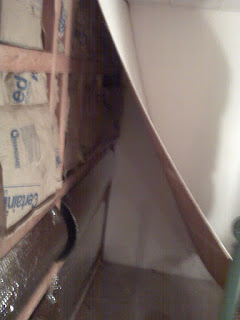I'm reading Thom Hartmann's latest book, which is for available for reading on
Truthout.org. It seems to be a very thoughtful guide for the way forward, based on our history and human nature. Here's how it starts....
______________________________
"I know no safe depository of the ultimate powers of the society but the people themselves; and if we think them not enlightened enough to exercise their control with a wholesome discretion, the remedy is not to take it from them, but to inform their discretion by education. This is the true corrective of abuses of constitutional power." - Thomas Jefferson, letter to William Charles Jarvis, September 28, 1820
On April 14, 1789, George Washington was out walking through the fields at Mount Vernon, his home in Virginia, when Charles Thomson, the secretary of the Continental Congress, showed up on horseback. Thomson had a letter for Washington from the president pro tempore of the new, constitutionally created United States Senate, telling Washington that he’d just been elected president and the inauguration was set for April 30 in the nation’s capital, New York City.
This created two problems for Washington.
The first was saying goodbye to his 82-year-old mother, which the 57-year-old Washington did that night. She gave him her blessing and told him it was the last time he’d see her alive, as she was gravely ill; and, indeed, she died before he returned from New York.
The second problem was finding a suit of clothes made in America. For that he sent a courier to his old friend and fellow general from the American Revolutionary War, Henry Knox.
Washington couldn’t find a suit made in America because in the years prior to the American Revolution, the British East India Company (whose tea was thrown into Boston Harbor by outraged colonists after the Tea Act of 1773 gave the world’s largest transnational corporation a giant tax break) controlled the manufacture and the transportation of a whole range of goods, including fine clothing. Cotton and wool could be grown and sheared in the colonies, but it had to be sent to England to be turned into clothes.
This was a routine policy for England, and it is why until India achieved its independence in 1947 Mahatma Gandhi (who was assassinated a year later) sat with his spinning wheel for his lectures and spun daily in his own home. It was, like his Salt March, a protest against the colonial practices of England and an entreaty to his fellow Indians to make their own clothes to gain independence from British companies and institutions.
Fortunately for George Washington, an American clothing company had been established on April 28, 1783, in Hartford, Connecticut, by a man named Daniel Hinsdale, and it produced high-quality woolen and cotton clothing as well as items made from imported silk. It was to Hinsdale’s company that Knox turned, and he helped Washington get—in time for his inauguration two weeks later—a nice, but not excessively elegant, brown American-made suit. (He wore British black later for the celebrations and the most famous painting.)
When Washington became president in 1789, most of America’s personal and industrial products of any significance were manufactured in England or in its colonies. Washington asked his first Treasury secretary, Alexander Hamilton, what could be done about that, and Hamilton came up with an 11-point plan to foster American manufacturing, which he presented to Congress in 1791. By 1793 most of its points had either been made into law by Congress or formulated into policy by either President Washington or the various states, which put the country on a path of developing its industrial base and generating the largest source of federal revenue for more than a hundred years.
Those strategic proposals built the greatest industrial powerhouse the world had ever seen and, after more than 200 successful years, were abandoned only during the administrations of Ronald Reagan, George H. W. Bush, and Bill Clinton (and remain abandoned to this day). Modern-day China, however, implemented most of Hamilton’s plan and has brought about a remarkable transformation of its nation in a single generation.
Hamilton’s 11-point plan for “American manufactures” is a primary inspiration for this book. It was part of a larger work titled
Alexander Hamilton’s Report on the Subject of Manufactures: Made in His Capacity of Secretary of the Treasury...."
CONTINUED ....
--
 Today, my friend Al and I were talking while working at the Mercer Island Thrift Store, suggested I try KIVA, a system that manages microloans. They screen the borrowers so the money is not wasted; their overhead is very low; you can personally picked the persons or projects you wish to help; and best of all, they are loans that are almost always repaid, so you can re-use your money over and over!
Today, my friend Al and I were talking while working at the Mercer Island Thrift Store, suggested I try KIVA, a system that manages microloans. They screen the borrowers so the money is not wasted; their overhead is very low; you can personally picked the persons or projects you wish to help; and best of all, they are loans that are almost always repaid, so you can re-use your money over and over!









